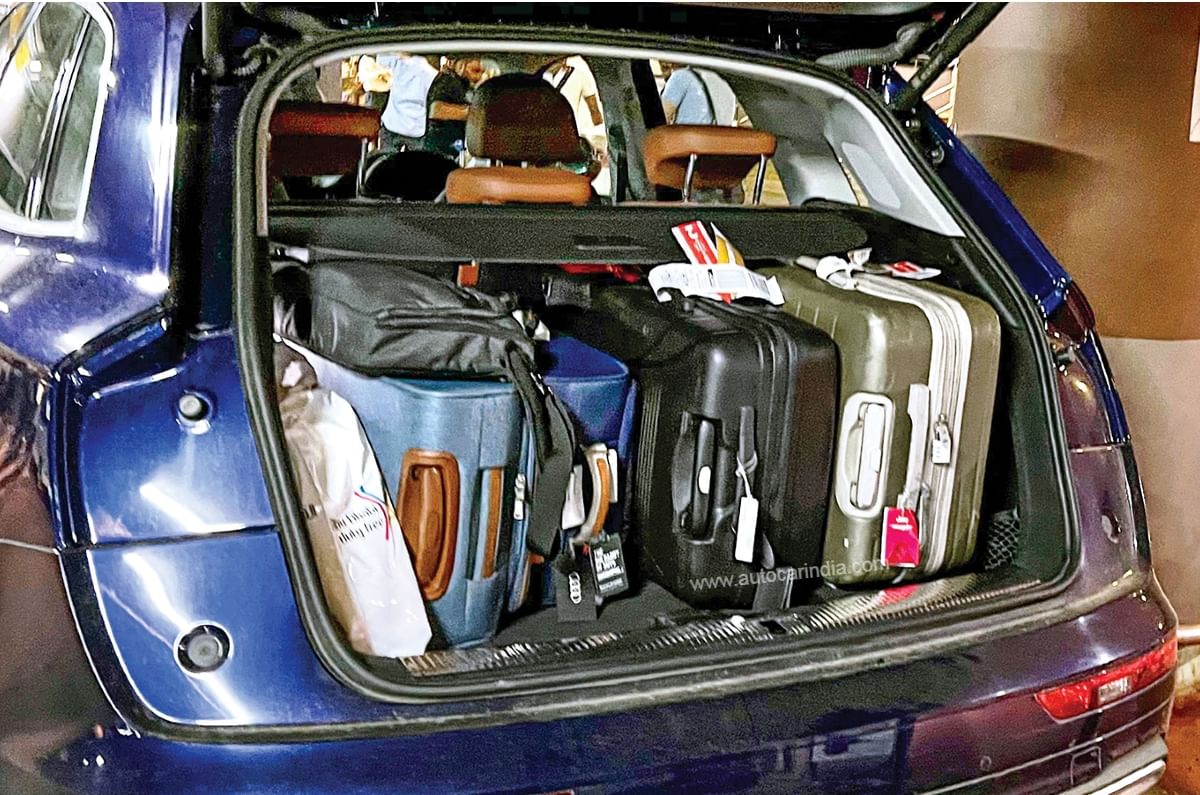Audi Q5 long term review, first report
The Q5 joins our fleet and slips into scrum of everyday traffic quite effortlessly.
Published on Sep 20, 2022 08:00:00 AM
41,008 Views
The first call of duty for our long term Audi Q5 was a mundane airport transfer. It was filling in for our long term Skoda Superb, which, with its massive boot, has become our designated ‘airport’ car. But Shapur was happily using the Superb and had no intention of parting with it anytime soon, and to be honest, the Q5 was an upgrade, a nice step up to a luxury SUV. And any concerns there may have been with regards to luggage capacity were immediately quelled.

The Q5 passed muster quite easily, with the well-shaped and deep boot swallowing two large and two medium-sized bags quite easily, without the need to remove the parcel shelf. With international travel back in full swing, the Q5’s boot space is an important box to tick. In fact, space is the Q5’s forte and the well-appointed cabin has enough of it, giving you little reason to pay extra money for a Q7. Unless you need a third row of seats and more power.
Speaking of power, we’ve sampled the Q5’s 2.0 TFSI in our long term A4 and were reminded of how effortless and smooth this 249hp turbo-petrol is. Whilst power and torque figures are what engines are usually judged by, what the spec sheet doesn’t tell you is how the engine is in the real world. And in our case, it’s a world of inching forward in bumper-to-bumper traffic, quick bursts of acceleration to close gaps and pivoting your right foot back and forth from throttle to brake pedal. It’s the engine calibration, a black art that Audi has got spot on, more so than even other brands (Skoda and VW) that use the same engine, which is what makes it so delightfully easy to drive.
The linearity, the perfectly calibrated response to every input from your right foot is the key to the Q5’s chilled out character and its complemented by the swift and sweet shifting 7-speed DCT. Easing out of home or office into rush hour traffic, the Q5’s power delivery is so easy to modulate. It’s not something you think about, it’s just something that makes driving this SUV really easy in traffic. And it’s not just the 2.0 TFSI doing a great job that makes the Q5 a wonderful urban car. The high seating position, fantastic all-round visibility, and most importantly, its not-too-big size is what makes sliding into the scrum of traffic so utterly effortless.
Even with the proximity sensors beeping madly triggered by bikes, cyclists and pedestrians wiggling around me, I’m not very stressed because I can easily see and judge the car’s extremities. The Saat Rasta junction near Mumbai’s Mahalaxmi station is a real free for all and a true test of any car’s urban warfare capabilities. The Q5 with its mouthy grille and deep metallic blue shade, which can be a touch intimidating, has so far come through this daily battleground unscathed.
But it’s the monsoons and not the traffic that has made Mumbai streets feel truly apocalyptic. Massive craters on the Western Express highway have slowed traffic to a crawl and a drive across what is the broken backbone of Mumbai is an ordeal that’s best avoided. But if you can’t, then it helps to have a car like the Q5, which gulps down potholes and flits through craters with just an occasional thwack from the wheel well. The Q5 doesn’t just isolate you from bad roads, but the well-insulated cabin shields you from the mayhem outside. Like with most Audis, the Q5 too gets high profile rubber as part of the India-spec package. The 235 section tyres have tall sidewalls that act as stronger buffer than the steel sprung suspension.
Inside the cabin, the infotainment system works well, but feels a bit dated compared to the latest MBUX system that Mercedes has been rolling out in all its cars. The digital cockpit too, once an Audi party trick, doesn’t have the same level of configurability as the competition. And I wish the cubby holes were a bit deeper to hold a large smartphone. Yes, there is a wireless charging pad, but its tucked away under the central armrest, which you have to lift every time to access your phone.
The opening stint of our long term Q5 has been entirely in the city, which means a low average speed, lots of sharp jabs of the throttle and the aircon permanently on. This isn’t good for fuel efficiency, especially with turbo-petrols, which are very sensitive to throttle inputs. Fuel consumption was a pretty poor 7.8kpl, but the average speed was a pedestrian 16kph. The first two tankfuls were of regular 91 octane fuel (that’s all I could find at the time) which explains the poor efficiency. The 2.0 TFSI is designed to run on a minimum of 95 octane and a switch to a high octane diet should see a marked improvement in performance and efficiency. The highway is now beckoning and we’ll let you know how the Q5 gets on on a long distance trip, in our next report.
Also see:
2021 Audi Q5 facelift India review, test drive
2021 Audi Q5 facelift India video review
Related Images
Related Videos
| Fact File | Petrol AT |
|---|---|
| Distance covered | 8,200km |
| Price now | Rs 65.5 lakh (ex-showroom, Delhi) |
| Test economy | 7.8kpl |
| Maintenance costs | Nil |
| Faults | Nil |
Copyright (c) Autocar India. All rights reserved.


